The Book of Jeremiah: a Work in Progress

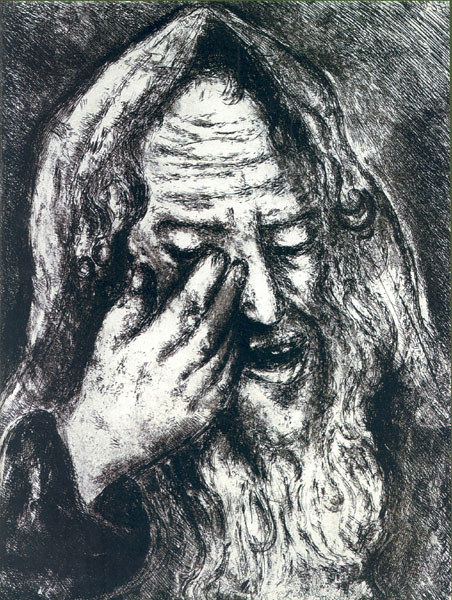
The Book of Jeremiah (or should we say the Books of Jeremiah?) provides us with a unique opportunity to explore how a biblical book developed over time. That is because we can compare in detail two quite different versions that have come down to us.
These two versions—or witnesses, in more scholarly jargon—are (1) the so-called received Hebrew text known as the Masoretic Text, or MT for short,1 and (2) the Greek translation known as the Septuagint, or LXX for short.2 MT is 20 percent longer than LXX. And the arrangement of the text and chapters differs somewhat between the two versions. No other book among the Law and Prophets exhibits as many textual variations as are found in these two versions of Jeremiah.
In comparing the two texts, however, great caution is required. The Hebrew MT ought to be compared not to the LXX in its Greek dress, but to the Hebrew text from which the Greek version presumably was translated. It is this underlying Hebrew text of the Septuagint that really interests us, and not the exegesis (textual clarifications and interpretations) introduced by the Greek translators. And there clearly was an underlying Hebrew text—scholars call it the Vorlage (German, “underlying text”)—from which the Greek translation was made in Alexandria in the second century B.C.E.
Can we translate the Greek Septuagint back into Hebrew, a process scholars call retroversion? Retroversion is usually a very difficult undertaking, fraught with uncertainty and dependent on vast experience and intuition. In the case of Jeremiah, however, we can claim considerable success because, as we know from the instances where the two versions do overlap, the Greek translation was made with relative fidelity. The Greek text is, in fact, a near literal translation of the Hebrew. From these overlaps we can also identify fixed Hebrew-Greek equivalents that provide considerable help in re-creating the Hebrew parent text of the LXX. Many details will continue to remain obscure, but in general we know which Hebrew text was used by the anonymous translator or translators in Alexandria who set out to render the Book of Jeremiah in Greek.
In the face of such significant differences in the length and arrangement of the two Hebrew texts, we must conclude that more than one Hebrew version of Jeremiah was circulating at the time.a
Having established that there were two different Hebrew versions of Jeremiah, is it possible to determine which is more original—or, better, earlier: the shorter version that was translated into Greek or the longer Hebrew version? I think it is.
Given the overall fidelity of the Greek translation, it seems highly unlikely that the translator would have abbreviated or rearranged the Hebrew text that he was translating. He must have been working from a shorter Hebrew text. Interesting support for this conclusion comes from fragments of the Book of Jeremiah—all in Hebrew—found among the Dead Sea Scrolls.3 The Qumran caves produced five copies of the Book of Jeremiah, all very fragmentary. Three of these copies (2QJer, 4QJera and 4QJerc) conform to the longer version of Jeremiah found in MT.b But the other two Jeremiah manuscripts (4QJerb and 4QJerd), which date to about 175 B.C.E., are very close to the Hebrew text that we get when we translate (retrovert) the Greek text back into Hebrew. Although only a few small fragments of these two manuscripts remain, they are nevertheless extremely significant because they agree with the LXX not only in minor details, but in the two major characteristics of that version: its shorter text and its different arrangement of some chapters.4 These two Dead Sea Scroll texts provide unequivocal evidence that the LXX translator had before him a Hebrew text that conformed quite closely to the shorter LXX text and that differed significantly from the text that has come down to us in the Hebrew MT.c
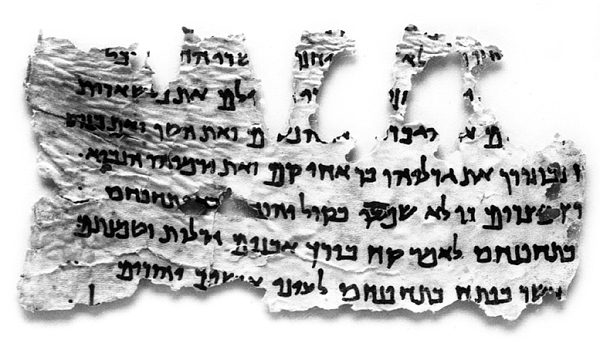
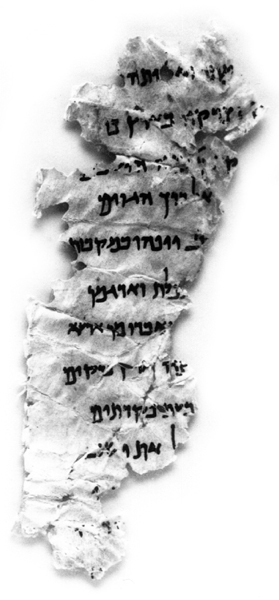
When confronted with two early versions of a document, text critics agree that the shorter text is usually the earlier one. Theoretically, the shorter text could have been abbreviated from an earlier, lengthier text. But later editors generally expand rather than abbreviate a text. That is what gives rise to the Latin maxim text critics usually rely upon, Lectio brevior preferenda est, “the shorter text is the better one.”d That is almost surely the case here. There are many telltale signs: The additions (or pluses, as scholars call them) in the longer text occasionally provide brief explanations that are not found in the shorter edition; sometimes details are provided in the longer edition that would be unlikely to be deleted by a later editor; and some formulas are expanded in the longer edition. All of these details (and others) indicate that the shorter text is earlier, and therefore “more original.”
Let’s look at a few examples from the two versions of Jeremiah:5 In Jeremiah 27, the prophet is advising the last king of Judah, King Zedekiah (597–586 B.C.E.), to submit to King Nebuchadnezzar and the rising power of Babylon. Jeremiah encourages the king to ignore those who have instructed him otherwise: “Do not give heed to the false prophets,” implores the prophet. “For they prophesy falsely to you—with the result that you shall be banished from your land.” To the priests and the people, Jeremiah offers the same message. At the end of this chapter, however, Jeremiah seems to shift to another subject. Here the prophet announces that the holy vessels that are still in Jerusalem will be taken to Babylon, “and there they shall remain, until I take note of them—declares the Lord of Hosts—and bring them up and restore them to this place” (Jeremiah 27:22). The prophecy that the Temple vessels would be returned is out of context here. Indeed, to speak of their return is inconsistent with the spirit of the surrounding verses, which deal with false prophets and not with the fate of the holy vessels. Moreover, it is anticlimactic to mention so quickly that the stolen vessels will be returned to Jerusalem; this only detracts from the prophet’s warning.
Perhaps not surprisingly, this verse—indeed, the last three verses in the chapter (vv. 20–22)—is missing from the shorter Greek text, which actually reads better and makes more sense than the longer MT version.
The additional material found in chapter 27 of the MT is pretty clearly a prophecy made after the fact; it must have been inserted at a time when the vessels had in fact been brought back during the rule of the Babylonians’ successors, namely the Persians under Cyrus the Great. Inserting a prophecy after the fact is called a vaticinium ex eventu. It is a clear sign that the text has been doctored in a later period, in this case after the Babylonian Exile, which ended in the late sixth century B.C.E. when Cyrus permitted the Jews to return to their homeland. Jeremiah, however, is speaking just before the destruction of the Judahite state in the early sixth century B.C.E.
Another added passage in the MT foreshadows the fall of Babylon, a clear indication that it, too, was inserted after the event. In Jeremiah 27:7 the prophet proclaims that “all nations shall serve him [Nebuchadnezzar of Babylon], his son and his grandson—until the turn of his own land comes, when many nations and great kings shall subjugate him.” The italicized passage is found in the MT version, but not the LXX. In both versions, the text then goes on to predict sword, famine and pestilence to those who do not submit to Nebuchadnezzar. The italicized addition, forecasting the destruction of Babylon, is out of place. And it is a prediction after the fact, another vaticinium ex eventu. Clearly, the LXX version of Jeremiah is the earlier one.
Given that there were (at least) two different Hebrew versions, we may ask how they developed. Did one develop from the other over many centuries as scribes inserted one change after another? I think not. The differences in wording and structure are by no means minor. And although the variations do not alter the basic message of the prophet, they do present several pericopes (episodes) in a completely different way, while adding new ones and omitting others. These are not just insignificant textual variations caused by scribal error or correction. Rather, they must be attributed to different authors or editors who worked on the text at a very early stage. Mere scribes are not in the habit of inserting such major changes. These changes must somehow have occurred at the stage when the Book of Jeremiah was still being composed or edited.
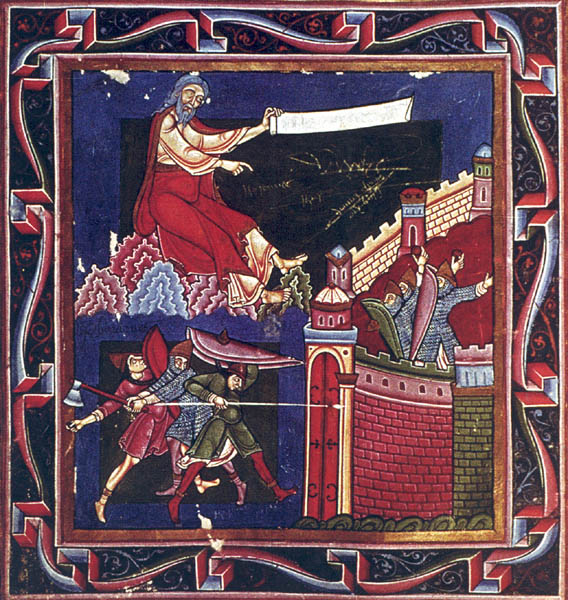
That is why we may call the shorter, earlier version of Jeremiah (the Greek version and the two Hebrew Qumran texts) Edition I and the later version (the MT version) Edition II. Both were originally written in Hebrew, but today the only complete copy of Edition I is preserved in a Greek translation (LXX). A few fragments of Edition I in Hebrew (the Hebrew Vorlage) have survived, however, among the Dead Sea Scrolls.
Edition II, which is substantially longer than Edition I, includes a number of new verses (both in poetry and in prose, as found in Edition I). Some of the material added to Edition II indicates that the editor had access to authentic Jeremianic material that had not been included in Edition I. For example, Edition II notes that Ebed-melech, the Ethiopian (or Cushite) who rescued Jeremiah from the pit, was a eunuch (Jeremiah 38:7). We are not told this in Edition I.
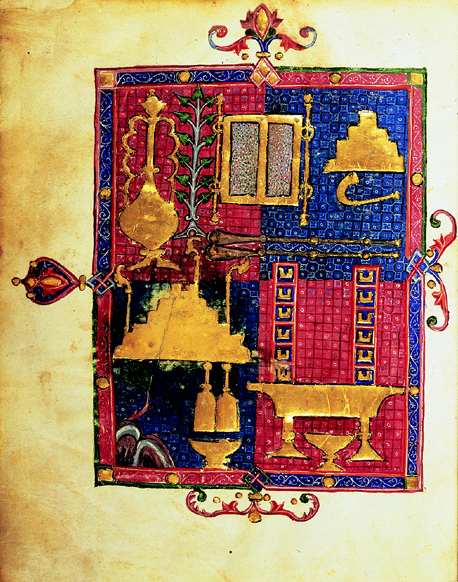
Among the additions in Edition II are utterances attributed to the prophet himself. The most remarkable addition of this kind is the prophecy in Jeremiah 33:14–26, sometimes called the “true branch” prophecy, in which the prophet predicts that a descendant of King David will sit on the throne of Israel forever and that the covenant between the Lord and the people of Israel will endure forever. Although scholars have often argued that this is a late interpolation or gloss, there is no sound reason for this skepticism (see sidebar to this article).
Sometimes the editor of Edition II simply wanted to clarify something in Edition I. He read the book as an exegete and changed the text accordingly. This was not at all uncommon in antiquity. But although Edition II adds a great deal and makes substantial changes, these changes do not significantly distort the prophet’s message. The editor of Edition II simply changed the text, clarified details, made explicit what was implicit and stressed ideas already contained in Edition I.
When clarifying additions were made, the seams are sometimes apparent because the insertions created syntactic difficulties that disturb the flow of the Hebrew sentence. For example, when Jeremiah was forced into hiding, he instructed his scribe Baruch to read publicly a scroll containing all the words the Lord had spoken to the prophet.e In Edition I, this instruction is simply, “Read the scroll to the people.” In Edition II, an addition (in italics here) creates some bumpy Hebrew, to say the least: “Read the scroll that you wrote at my dictation the words of the Lord to the people” (Jeremiah 36:6). Ancient Hebrew texts include no punctuation signs, such as commas or hyphens, so the quoted verse indeed reads strangely.
At other times, Edition II simply makes explicit what was implicit in Edition I. For example, the prophet repeatedly advises submission to Babylon. In Edition I, Jeremiah simply says, “Put your necks and serve the king of Babylon.” But in Edition II, the prophet expresses the idea more fully: “Put your necks under the yoke of the king of Babylon; serve him and his people, and live” (Jeremiah 27:12). Where the enemy is identified simply as “the people from the North” in Edition I, the enemy is revealed specifically as Nebuchadnezzar in Edition II (see Jeremiah 25:9–12, 39:11).
Sometimes Edition II adds headings to prophecies. Thus, in Jeremiah 16:1, we read in MT, “The word of the Lord came to me.” The prophecy then continues. This heading is missing from the LXX, but this difference does not tell us anything ideologically about the differences in the two editions.
Occasionally the editor of Edition II made a mistake in adding these headings. The heading he put at the beginning of chapter 27 reads: “At the beginning of the reign of King Jehoiakim [609–598 B.C.E.] son of Josiah of Judah, the word came to Jeremiah from the Lord.” But the chapter actually discusses the situation during the reign of Zedekiah (597–586 B.C.E.), one of Josiah’s successors and the last king of Judah. This heading was erroneously repeated from the beginning of chapter 26, where it appropriately refers to the content of that chapter.
In Edition I, persons are usually fully identified only at the first mention, as is customary elsewhere in the Bible. The editor of Edition II often added explicit identifications regardless of whether the identification had been made previously. Thus in Edition I Jeremiah is called “Jeremiah the Prophet” only 4 times; in Edition II, 27 times. Similarly, in Edition II alone, Jeremiah’s amanuensis Baruch is called Baruch “the Scribe”; Nebuchadnezzar is repeatedly identified as “king of Babylon” and Jehoiachin as “the son of Jehoiakim king of Judah.” 4QJerd and the LXX read “Nebuzaradan” in chapter 43:6, while the MT reads “Nebuzaradan the chief of the guards.” This type of variation is reflected in the Qumran fragments: 4QJerd, like the LXX, reads “Gedaliah son of Ahikam,” while MT reads “Gedaliah son of Ahikam, son of Shaphan.” These expanded names are one of the characteristic features of the second edition (MT).
Despite all the additions and clarifications in Edition II, however, at a later stage both editions apparently circulated simultaneously. The appearance of Edition II did not make Edition I obsolete, just as in modern times a second edition of a book may be released while the first edition is still widely read.
While we cannot date precisely when each of the two editions began circulating, we can say that both continued in use until the end of the Second Temple period (70 C.E.), as reflected in the Qumran copies. At this time, the collection we call the Hebrew Bible was not in final form; the canon had not yet been fixed, so variations of this kind were permissible. In Temple circles, Edition II was no doubt preferred, indeed, regarded as the exclusively correct edition. On the other hand, Edition I circulated in Israel and was brought to Egypt in the second century B.C.E., when it was translated into Greek in the Septuagint, and was still available centuries later at Qumran.
If the Masoretic Text alone had survived, we would never have been able to trace this development in the Book of Jeremiah. Thanks to the Septuagint and the fragments of Jeremiah from the Dead Sea Scrolls, we can now unravel the exciting prehistory of this moving book.
MLA Citation
Footnotes
The most significant structural difference involves the position of the so-called Oracles Against the Foreign Nations. See Steve Delamarter, “Thus Far the Words of Jeremiah,” BR 15:05.
The names of the Dead Sea Scrolls incorporate the number of the cave in which they were discovered. 2QJer is the only copy of Jeremiah found in Qumran Cave 2; 4QJera, 4QJerb, 4QJerc and 4QJerd are the first through fourth copies of the book from Cave 4.
Both versions are readily available in English translations. The longer Hebrew version, based on MT, is represented, with minor differences, in almost all modern Bible translations, starting with the 17th-century King James Version. The shorter version, which served as the model for the LXX, is found in modern translations of the Septuagint, such as Sir Launcelot C.L. Brenton, The Septuagint Version of the Old Testament with an English Translation (1851; Peabody, MA: Hendrickson, 1986).
But see David Noel Freedman, “Caution: Bible Critic at Work,” BR 15:01.
Two clay impressions of Baruch’s personal seal have been discovered. One belongs to the Israel Museum, in Jerusalem. The second, which is marked with what appears to be the scribe’s fingerprint, is in a private London collection. See “Fingerprint of Jeremiah’s Scribe,” BAR 22:02.
Endnotes
The Masoretic Text—the traditional Hebrew text—is named for the Masoretes (meaning “those who transmit [the biblical text]”), who in the late first millennium C.E. devised a complex system of vowel marks, cantillation signs and annotations to safeguard the text of the Hebrew Bible.
The name Septuagint, from the Latin for 70, and its abbreviation, LXX, refer to the legendary 72 Jewish translators brought to Egypt from Jerusalem in the third century B.C.E. to translate the Torah into Greek.
The Qumran texts have been published by this author, Emanuel Tov, in Eugene Ulrich et al., Qumran Cave—The Prophets, Discoveries in the Judaean Desert XV (Oxford: Oxford Univ. Press, 1997), pp. 145–207.
4QJerd, like the LXX, is shorter than MT in several details. In Jeremiah 10, 4QJerb is also shorter than MT, and it arranges the verses differently, again as in the LXX.
A more detailed discussion including many more examples may be found in the following articles by the author: “Exegetical Notes on the Hebrew Vorlage of the LXX of Jeremiah 27 (34),” Zeitschrift für die alttestamentliche Wissenschaft 91 (1979), pp. 73–93, rev. version in The Greek and Hebrew Bible—Collected Essays on the Septuagint, Supplements to Vetus Testamentum 72 (Leiden: Brill, 1999), pp. 363–384; “Some Aspects of the Textual and Literary History of the Book of Jeremiah,” in Pierre-Maurice Bogaert, ed., Le livre de Jérémie, le prophète et son milieu, les oracles et leur transmission, Bibliotheca ephemeridum theologicarum lovaniensium 54 (Leuven, 1981), pp. 145–167; “The Literary History of the Book of Jeremiah in the Light of Its Textual History,” in Jeffrey H. Tigay, ed., Empirical Models for Biblical Criticism (Philadelphia: Univ. of Pennsylvania Press, 1985), pp. 211–237, rev. version in The Greek and Hebrew Bible (1999), pp. 345–364; “The Characterization of the Additional Layer of the Masoretic Text of Jeremiah,” Eretz-Israel 24 (Jerusalem: Israel Exploration Society, 1999), pp. 55–63 (Hebrew with English summary).
